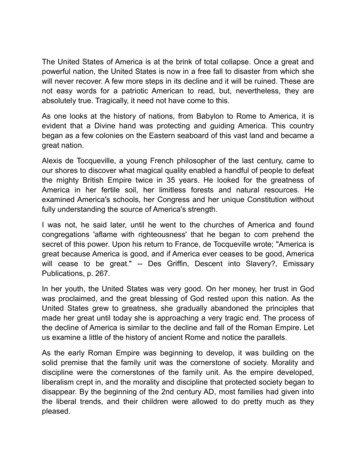
Transcription
Thamar E. GindinThe Book of EstherUnmaskedZeresh Books
ᴘRᴀISᴇ FᴏR ᴛHᴇ HᴇBRᴇᴡ ᴇᴅIᴛIᴏN ᴏFᴛHᴀᴍᴀR ᴇ. GINᴅIN’STHᴇ Bᴏᴏᴋ ᴏF ESᴛHᴇR UNᴍᴀSᴋᴇᴅ‘A refreshing and readable blend of erudite scholarship and humour, which Gindin does masterfully.’– Ady Manory, Cincinnati, Ohio, USA‘The book is so much fun to read! Who knew thata book about Indo-Iranian philology could be somuch fun?! Well done, really. Truly amazing.’– Prof. Adam Silverstein, Bar Ilan University, Israel‘This is a book you will not want to take with youto the synagogue, because it’s too interesting, andyou won’t be able to listen to the reading and fulfilthe commandment.’– Netanel Chlafo Brandl, Hodayot, Israel‘Your book is so absolutely wonderful! I know nothing about etymology, but you’ve created a composition that is elegant and beautiful and profound, andthe light it sheds on the Book of Esther – I wonderhow it hadn’t been shed before.’– Shai Gillis, Mevo Beitar, Israel
Thamar E. GindinThe Book of EstherUnmaskedZᴇRᴇSH BᴏᴏᴋS
INTRODUCTIONThe history of the nation of Israel has been intertwined withthat of the Iranian people since the eighth century Bᴄᴇ. Withthe Assyrian exile, Jews began to come in contact with Iranians. Four of the books of the Bible1 were written in a settingthat is clearly Iranian: Daniel, Ezra, Nehemiah and Esther.The other books written during the exile and afterwards,during the Second Temple period, exhibit Iranian featuresthat aid researchers in dating them, e.g. Persian words (inthe Hebrew text) such as gizbar ‘treasurer’, zman ‘time’ andpitgam ‘message’ (in Modern Hebrew, ‘proverb’), or mattersof faith such as Satan as a spiritual entity, resurrection andother eschatological beliefs.The Book of Esther can be read in many ways. There aretraditional Jewish readings, feminist readings, comparativebiblical readings and many more. In recent years, an antisemitic reading has developed in Iran. Since the story takesplace in the Persian king’s court, the present book offers anIranological reading, that is, a reading based on our currentknowledge about ancient Iranian history, politics, religion,culture, language and so on. While the books of Ezra andNehemiah are considered history per se, the Book of Esther1Throughout the book, the word ‘Bible’ refers to the Hebrew Bible(the Christian Old Testament).x
INᴛRᴏᴅᴜᴄᴛIᴏN xiis subject to controversy even among scholars: some insist itdescribes historical events, while others consider it as a legend or a fable. Whereas the leading question in my lecturesis ‘truth or fiction?’, the present book hardly deals with theBook’s historicity; rather, it aspires to present ancient Iran,and sometimes the ancient Near East, through the story ofEsther.The primary sources to the book are varied and include,naturally, inscriptions left by the Achaemenid kings themselves in Persian cuneiform. I also relied on descriptions byGreek historians, first and foremost Herodotus. True, theircredibility is questionable, both because the ancient Greekswere the sworn enemies of the Persians (and history is always biased, even when there’s no rivalry), and because thereliability of their sources is unclear. Sometimes it seemslike they’re based on mythology: the story of Cyrus’ birthbears a disturbing similarity to the birth stories of Abraham,Zoroaster and Moses, and the ascension of Darius to thethrone is suspiciously similar to the Book of Esther, as weshall see in Chapter 9. I’ve read the Greek historians in English on the Perseus website, and in times of doubt also consulted the original Greek.Among the primary sources you will also find the Septuagint version of the Book of Esther. This Greek translationwas made from a version of the Hebrew text different fromthe Masoretic Text, the Hebrew Bible traditionally used byJews. Another Greek translation I’ve used is the Alpha Text,whose public relations are not as good as those of the Septuagint. Most scholars date the Septuagint earlier than the Al-
INᴛRᴏᴅᴜᴄᴛIᴏN xiipha Text, but this relative dating has been challenged, andthe controversy remains. I’ve read the Septuagint in a parallel Greek–English version, and the Alpha Text in Englishonly. I discuss these translations only when I have something worthwhile to say about them; not all the differencesare enumerated here.The Septuagint includes six significant additions that donot appear in the Masoretic text. In this book, I’ve broughtthem without additional commentary.I occasionally refer to sayings and opinions by Chazal,the ancient Jewish sages who wrote the Mishna and the Talmud, but since there are many commentaries on the Bookof Esther from a Jewish point of view, I did not treat thesesources thoroughly or in depth.This book is structured as an annotated Book of Esther.I’ve tried to even out the information between chapters, sothat some of the names, terms and topics appear with a shortcommentary at their first occurrence, and are elaborated onin other chapters where they are mentioned again. Part ofthe commentary appears as footnotes. Many of these are notbibliographical references, but rather secondary commentary, that is, notes on the commentary that are not directlyrelated to the text itself.‘Heavy’ linguistic commentary, which some might wantto skip and others might want to delve more deeply into,may be found both in footnotes and in paragraphs markedby a thin line.Unless otherwise stated, I used the New Revised StandardVersion (NRSᴠ) for the English text. Whenever I felt that the
INᴛRᴏᴅᴜᴄᴛIᴏN xiiiAuthorised (King James) Version (ᴀᴋᴊᴠ) reflects the Hebrewtext better for my purposes, I used it instead. OccasionallyI refer to words of Iranian origin in the original MasoreticText (ᴍᴛ) itself. Quotations from the Septuagint are takenfrom A New English Translation of the Septuagint.This book will strengthen each reader’s belief as to thehistoricity of the Book of Esther. Those who believe theevents are historical will find that the author describes theroyal court with utmost accuracy, from the palace structure and feast customs to court procedures and women’s status. Almost all Iranian names in the ᴍᴛ have meanings (theothers may have meanings that escape me), and the authoruses Persian words and understands their meaning. Thosewho believe this is merely a legend and refuse to accept theslaughter of 75,810 individuals at the hands of the Jews willbe happy to learn that there is no documentation for theevent except in the Book of Esther, and that the story andthe holiday echo neighbouring cultures of the time.HISᴛᴏRIᴄᴀᴌ ᴀNᴅ ᴌINGᴜISᴛIᴄ BᴀᴄᴋGRᴏᴜNᴅPersian is an Indo-European language. The tribes we nowcall Indo-European originated in a place which is neitherIndia nor Europe, probably in the southern steppes of the(then) future Soviet Union. Then a certain group of them,called the Aryan tribes – in their language, Ārya ‘noble, hospitable’ – began roaming.The Aryans set forth southbound. Some continued to thesouthern subcontinent, India, and some roamed westward,to a territory they called ‘(the land) of the Aryans’ – in their
INᴛRᴏᴅᴜᴄᴛIᴏN xviiiHaxāmaniš ( 705– 675)hHamniSAchaemenesČišpiš ( 675– 640)ciSpiSTheispesKuruš I ( 640– 600)KuRuSCyrus, KorešAryāramna ( 640– 590)ariyarmnAriaramnesKambūjiyā I ( 600–559)kbuJiyAršāma ( 590–559)arSamCambyses, KanbuziArsamesKuruš II (559–530)Cyrus the Great, founder of the empireVištāspaVStaspKambūjiyā II(530–522)Bardiya2 (522)brDiySmerdisHystaspesDārayavahuš I (522–486)daryvuSDarius, DaryavešXšayāršā I (486–465)HSyarSaXerxes, AḥašverošArtaxšaça I (465–425/4)artHSqaArtaxerxes, Artaḥšast(a)Xšayāršā IIDārayavahuš II(425/4)(424–404/5)Artaxšaça IIOstanesArtaxšaça IIIAršāma(405/4–359/8)Arses(338/7–336/5)2An impostor king; details in Chapter 9.Dārayavahuš III(336/5–330)
ᴄHᴀᴘᴛᴇR 1AN ANCHOR IN REALITY1 This happened in the days of Ahasuerus, the sameAhasuerus who ruled over one hundred and twentyseven provinces from India to Ethiopia.Ahasuerus. Ahasuerus (Old Persian Xšayāršā, Greek Xerxes)is the name of two kings of the Achaemenid dynasty, whichruled the First Persian Empire (539–330 Bᴄᴇ). The empirewas founded by Cyrus the Great, but the dynasty is namedafter his great-great-grandfather, Haxāmaniš (Achaemenes).1The complete family tree may be found in the introduction.Ahasuerus of the Book of Esther is identified with Xšayāršāthe First, who reigned between 486–465 Bᴄᴇ. He was theeldest son of Dārayavahuš (Darius) the Great and Hutausa(Atossa), daughter of Cyrus the Great. Xšayāršā the Second,his grandson, reigned for only 45 days, and thus cannot bethe king referred to in the Book of Esther, which begins inthe third year of his reign and ends in the twelfth.Ahasuerus is mentioned once in the Book of Ezra (4:6),between Darius and Artaxerxes – in accordance with hisplace on the sequence of rulers. In the Book of Daniel, onthe other hand, there is mention of ‘Darius son of Ahasuerus,by birth a Mede’. Darius the Mede is not mentioned any1The meaning of the name: ‘he who has a friend’s or an ally’s mind’(from the same root, man).24
ᴄHᴀᴘᴛᴇR 1: ᴀN ᴀNᴄHᴏR IN RᴇᴀᴌIᴛY 25where else, and there is no such documented sequence ofrulers: Darius’ father was Vištāspa, and Ahasuerus’ son wasArtaxerxes. Moreover, it is Cyrus who was half-Mede. Mostscholars agree the confusion results from the time elapsedbetween the events and the writing of the Book of Daniel.The historical Xšayāršā I left many rock and wall inscriptions in Persepolis as well as scattered inscriptions in theother capitals, Susa (biblical Shushan) and Ecbatana (biblical Ahmeta, present-day Hamedan), and the citadels Vanand Alvand. In these inscriptions, he mostly brags about thesize of his empire and the enormous construction projectsthat he and his father carried out. We will remember thatin Chapter 3. Meanwhile, in Greece, Xerxes is the Persianking the Greeks love to hate more than any other. He hasdefeated them and been defeated by them. In Chapter 8, wewill expand on one of his most painful defeats, a defeat thatresulted from not listening to a wise woman’s advice.The name Xšayāršā has two elements. One is derivedfrom the root xša, meaning ‘to be worthy’ or ‘to reign’.When conjugating the root as a verb in the present tense,the stem is xšaya-, which may be translated as ‘reigning’. Another word from the same root, which is also the most common word in Old Persian and the first one to be decipheredwhen the language and its cuneiform system were discovered, is xšāyaϑiya ‘king’, which became New Persian šāh(Shah). In Sanskrit, the classical language of India and a sister language of Old Persian, the root is kṣa, from which thename of the warrior caste is derived: kṣatriya. Kings comefrom this caste.
ᴄHᴀᴘᴛᴇR 1: ᴀN ᴀNᴄHᴏR IN RᴇᴀᴌIᴛY 26The second part of the name is ṛṣan ‘man, hero’, or aršan,some sort of male animal. The common interpretation ofthe name is ‘ruling over heroes’ or ‘hero among kings’.In the nominative (subject) case, the case in which thisname usually appears, xšayāršan is declined as xšayāršā, likeall ancient Indo-Iranian nouns ending in -an. Two wellknown Sanskrit examples for this declension are ātman ‘self,soul, spirit’, which we know from the (nominative) epithetmahātmā ‘of great soul’, and karman ‘deed’, which Westernlanguages adopted in its nominative form, karma.In the Hebrew Bible, the pronunciation of the name is/axašveroš/, usually spelled ʾḤŠᴡRᴡŠ but sometimes ʾḤŠᴡRŠ(with the same vocalisation) and once also ʾḤŠRŠ2 .Xšayāršā, Xerxes, Ahasuerus – how did we get such different names in the different languages?The name Xšayāršā is difficult to pronounce in bothHebrew and Greek, for different reasons. Greek has no /š/sound. The cluster /xš/ becomes Greek /ks/, rendered inLatin by the letter x (in English, x in initial position is pronounced as /z/). */kserses/ became /kserkses/ (Xerxes) byway of assimilation.In Hebrew, the main problem is that the classical language could not tolerate an initial consonant cluster; that is,a word cannot begin with two or more consonants withouta vowel in between. This problem has two possible solutions. Here we see one: prothesis (pros ‘before’, thesis ‘some2Here, as in quite a few places in the Hebrew Bible, the readingtradition differs from the written version, and the name is pronouncedas in other places.
ᴄHᴀᴘᴛᴇR 1: ᴀN ᴀNᴄHᴏR IN RᴇᴀᴌIᴛY 27thing laid’). A prothetic vowel is a vowel placed before a consonant cluster, thus breaking it. It’s much easier to pronounce/axšayāršā/ than /xšayāršā/. Try it yourself!Since Classical Hebrew did not render the last vowel ofthe name in writing, the spelling remained ʾḤŠYRŠ. The letter Y ( )י became ᴡ ( )ו , which happens many times in handwriting, and in one case was omitted altogether. Vocalisation marks were added to the Bible only centuries after theredaction of the original text, reflecting later pronunciation.The second solution to consonant clusters is epenthesis:breaking the cluster by inserting a vowel between the twoconsonants. In Akkadian, the king’s name is attested bothwith prothesis – Axšiyaršu, and with epenthesis – Xišiyaršu.3Today, Persian no longer tolerates consonant clusters.Anyone who has ever heard Iranians speak languages thatdo have initial consonant clusters could hear both solutions:estudent, estart and estop with prothesis, and pirint, tiridi (3ᴅ),porofesor with epenthesis. The name Xšayāršā is pronounced/xašāyāršā/.The similarity between the last syllable of the name andthe Persian word šāh ‘king’ paved the way for meta-analysis,a re-analysis of the word in a way that does not reflect itsoriginal etymology: the king, by folk etymology, is Xašāyāršāh, and Iranians who bear his name are called Xašāyār.43The suffix -u in Akkadian names is a case ending. Semitic wordshave three cases. Indo-Iranian languages had eight. The names arequoted here in the nominative case, but some are also documented inthe direct object (accusative) case – Xišiyarša, and in the catch-all (genitive) case – Xišiyarši.4Meta-analysis often
6 Esther said, ‘A foe and enemy, this wicked Ha-man!’ Then Haman was terrified before the king and the queen. A foe and enemy. Alphaadds:‘yourfriend’. 7 The king rose from the feast in wrath and went into the palace garden, but Haman stayed to beg hislifefromQueenEsther,forhesawthattheking had determined to destroy him.











